Description
Consistent H61 DDR3 Motherboard Features:
Consistent H61 DDR3 motherboard is a crucial component of any computer system, serving as the central hub that connects various hardware components and facilitates communication between them. The H61 chipset, in particular, is known for its reliability and compatibility with Intel processors, making it a popular choice for many users. In this comprehensive description, we will explore the key features and benefits of a consistent H61 DDR3 motherboard, discussing its specifications, compatibility, performance, and potential use cases in detail.
Key Features:
- Consistent H61 Chipset: The H61 chipset is designed for compatibility with Intel’s second and third-generation Core processors, ensuring a stable and efficient computing experience. This chipset provides a solid foundation for building a budget-friendly yet capable system.
- DDR3 Memory Support: DDR3 (Double Data Rate 3) is the standard memory type supported by the H61 motherboard. DDR3 memory offers decent performance and is widely available at affordable prices, making it an excellent choice for users on a budget.
- Socket Compatibility: The consistent H61 DDR3 motherboard typically features an LGA 1155 socket, which is compatible with a wide range of Intel processors. This socket provides flexibility for users to choose from various CPU options based on their performance requirements and budget constraints.
- PCIe Slots: H61 motherboards typically come with one or more PCIe (Peripheral Component Interconnect Express) slots, which allow you to install dedicated graphics cards, sound cards, or other expansion cards. While they may not support the latest PCIe standards like newer motherboards, they are still suitable for most gaming and productivity needs.
- SATA Ports: These motherboards usually feature SATA (Serial Advanced Technology Attachment) ports for connecting storage devices like hard drives and SSDs. SATA III (6 Gb/s) ports are common on H61 motherboards, ensuring fast data transfer speeds.
- USB Ports: Multiple USB ports are available for connecting various peripherals, such as keyboards, mice, printers, and external storage devices. While H61 motherboards may not have the latest USB standards, they still provide ample connectivity options.
- Audio Support: H61 motherboards typically offer integrated audio solutions, such as Realtek or VIA audio chipsets. While not audiophile-grade, they provide decent sound quality for everyday use.
- Network Connectivity: Ethernet ports are commonly found on H61 motherboards, allowing for wired internet connectivity. While they lack built-in Wi-Fi, you can add a Wi-Fi card to one of the available PCIe slots if wireless networking is required.
- BIOS Features: The motherboard’s BIOS (Basic Input/Output System) provides a user-friendly interface for configuring various settings, such as CPU clock speed, RAM timings, and boot order. It also enables you to update the motherboard’s firmware for improved compatibility and performance.
Compatibility:
- A consistent H61 DDR3 motherboard is primarily compatible with Intel processors that use the LGA 1155 socket. This includes a wide range of second and third-generation Intel Core processors, such as the Sandy Bridge and Ivy Bridge series. Before purchasing a motherboard, it’s essential to ensure compatibility with your chosen CPU.
- In terms of memory, H61 motherboards support DDR3 RAM modules. The number of RAM slots and maximum supported memory capacity may vary depending on the specific motherboard model. It’s essential to check the motherboard’s specifications for details on memory compatibility.
- For graphics cards, H61 motherboards typically support a range of dedicated graphics cards from various manufacturers. However, it’s crucial to verify the PCIe slot configuration (e.g., PCIe x16) to ensure compatibility with your chosen graphics card.
Performance:
- The performance of a consistent H61 DDR3 motherboard largely depends on the components you pair with it. Here are some factors that can influence overall system performance:
- Processor: The choice of Intel CPU will significantly impact performance. Opting for a more powerful CPU will result in better overall system performance, making tasks like gaming, content creation, and multitasking smoother.
- Memory: DDR3 RAM is a capable memory type, but the motherboard’s maximum supported memory capacity and the amount of RAM you install will affect performance. More RAM allows for better multitasking and improved system responsiveness.
- Graphics Card: If you plan to use the system for gaming or graphics-intensive applications, a dedicated graphics card is essential. The performance of your GPU will have a significant impact on gaming performance and graphical tasks.
- Storage: The choice between an HDD (Hard Disk Drive) and an SSD (Solid-State Drive) for storage will impact system responsiveness and load times. Using an SSD for the operating system and frequently accessed programs can significantly improve overall system performance.
- Cooling and Case: Proper cooling and a well-ventilated case can help maintain optimal operating temperatures, ensuring that the CPU and GPU can perform at their best without thermal throttling.
- Power Supply Unit (PSU): A suitable PSU is crucial to provide stable and sufficient power to all components. Choosing a PSU with an appropriate wattage rating is essential for system stability and longevity.
Use Cases:
A consistent H61 DDR3 motherboard is well-suited for a variety of computing tasks and user profiles. Here are some common use cases:
- Budget Gaming: Pairing this motherboard with a compatible Intel CPU and a mid-range or entry-level graphics card can create a budget-friendly gaming rig capable of handling popular games at respectable frame rates.
- Office Productivity: For office work, web browsing, and document editing, this motherboard provides ample performance. It can support multiple monitors, making it suitable for productivity-oriented tasks.
- Home Theater PC (HTPC): If you’re building a home theater PC, an H61 motherboard can be a cost-effective choice. It can handle media playback, streaming, and light gaming while fitting in compact HTPC cases.
- General Use: This motherboard is ideal for everyday computing tasks, such as web browsing, email, and multimedia consumption. Its reliability and compatibility make it a solid choice for home users.
- Legacy Hardware: If you have older DDR3 RAM modules or processors lying around, a consistent H61 DDR3 motherboard can help you build a functional system without investing in newer components.
- Educational and Small Business Environments: Schools, small businesses, and organizations with basic computing needs can benefit from the cost-effectiveness and reliability of H61 motherboards for office and educational purposes.
Conclusion:
In summary, a consistent H61 DDR3 motherboard offers a reliable and budget-friendly foundation for building a computer system. While it may not have the latest features and technologies found in more recent motherboards, it excels in compatibility with older Intel processors and DDR3 memory. Its versatility makes it suitable for a range of computing tasks, from budget gaming to everyday office use. By carefully selecting compatible components, you can create a capable and cost-effective system that meets your specific needs and budget constraints.
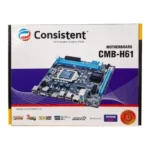

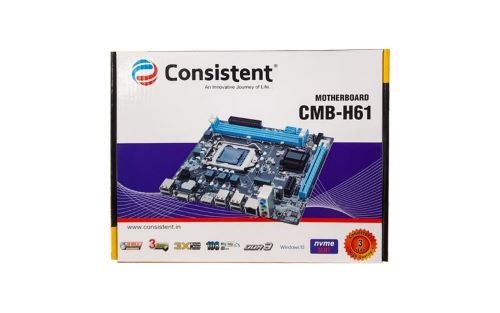
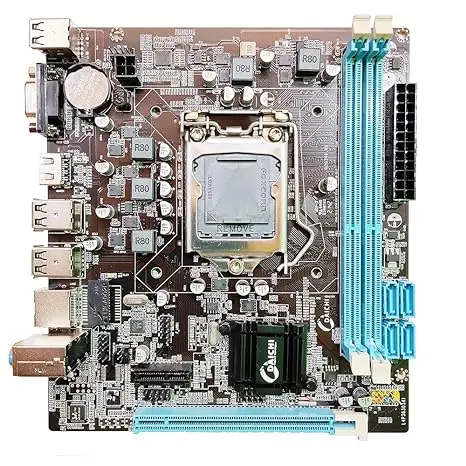
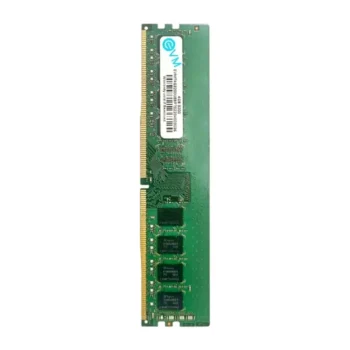

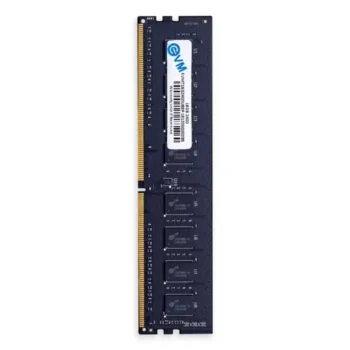

Reviews
There are no reviews yet.